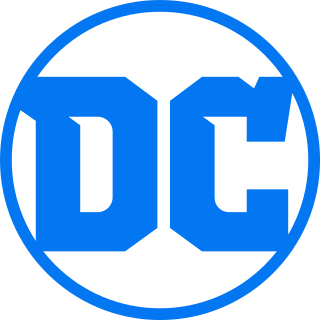
DC Comics, Inc. is an American comic book publisher and the flagship unit of DC Entertainment, a subsidiary of Warner Bros. Discovery. DC is an initialism for "Detective Comics", an American comic book series first published in 1937.
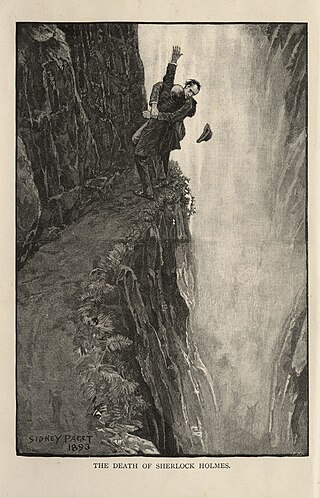
Retroactive continuity, or retcon for short, is a literary device in which facts in the world of a fictional work that have been established through the narrative itself are adjusted, ignored, supplemented, or contradicted by a subsequently published work that recontextualizes or breaks continuity with the former.

"Crisis on Infinite Earths" is a 1985–1986 American comic book crossover storyline published by DC Comics. The series, written by Marv Wolfman and pencilled by George Pérez, was first serialized as a 12-issue limited series from April 1985 to March 1986. As the main piece of a crossover event, some plot elements were featured in tie-in issues of other publications. Since its initial publication, the series has been reprinted in various formats and editions.

The Justice League, or Justice League of America (JLA), is a group of superheroes appearing in American comic books published by DC Comics. The team first appeared in The Brave and the Bold #28. The team was conceived by writer Gardner Fox as a revival of the Justice Society of America, a similar team from DC Comics from the 1940s which had been pulled out of print due to a decline in sales.

The DC Universe (DCU) is the shared universe in which most stories in American comic book titles published by DC Comics take place. In context, the term "DC Universe" usually refers to the main DC continuity. It contains such well-known superheroes as Batman, Superman, Wonder Woman, the Flash, Green Lantern, Aquaman, Green Arrow, Shazam, Martian Manhunter, and Cyborg; as well as teams such as the Justice League, the Justice Society of America, the Suicide Squad, Doom Patrol, and the Teen Titans. It also contains well-known supervillains, including the Joker, Lex Luthor, the Cheetah, the Reverse-Flash, Sinestro, Black Manta, Deathstroke, Black Adam, Brainiac, and Darkseid.

The All-Star Squadron is a DC Comics superhero team that debuted in Justice League of America #193 and was created by Roy Thomas, Rich Buckler and Jerry Ordway. Although the team was introduced in the 1980s, its self-titled series took place in the 1940s, retroactively inserting their narratives into the fictional history of the DC Comics superheroes. The team included many of DC's Golden Age era characters, new characters, and other World War II superheroes that DC did not own during the 1940s but later acquired. The name "All-Star Squadron" was creator Roy Thomas' reference to All Star Comics, the series that introduced the Justice Society of America, the first comic book superhero team.

Who's Who: The Definitive Directory of the DC Universe (1985–87), usually referred to simply as Who's Who, is the umbrella title for a number of comic book series which DC Comics published to catalogue the wide variety of fictional characters in their imaginary universe, the DC Universe.

Ultimate Marvel, later known as Ultimate Comics, was an imprint of comic books published by Marvel Comics, featuring reimagined and modernized versions of the company's superhero characters from the Ultimate Marvel Universe, later known as the Ultimate Universe. Those characters include Spider-Man, the X-Men, the Ultimates, the Fantastic Four, and others. The imprint was launched in 2000 with the publication of the series Ultimate Spider-Man and Ultimate X-Men in 2001, followed by The Ultimates and Ultimate Fantastic Four in 2002 and 2004 respectively providing new origin stories for the characters. The reality of Ultimate Marvel is designated as Earth-1610 as part of the Marvel Comics Multiverse.
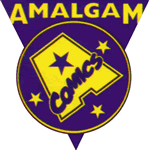
Amalgam Comics was a collaborative publishing imprint shared by DC Comics and Marvel Comics, in which the two comic book publishers merged their characters into new ones. These characters first appeared in a series of 12 one-shots which were published in April 1996 between Marvel Comics versus DC #3 and DC versus Marvel Comics #4, the last two issues of the DC vs. Marvel crossover event. A second set of 12 one-shots followed one year later in June 1997, but without the crossover event as a background. All 24 of these one-shots took place between the aforementioned issues of DC vs. Marvel Comics.
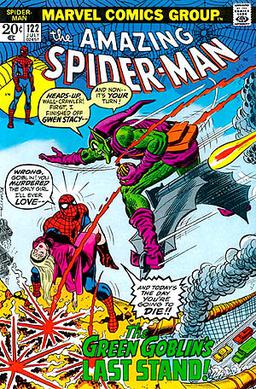
The Bronze Age of Comic Books is an informal name for a period in the history of American superhero comic books, usually said to run from 1970 to 1985. It follows the Silver Age of Comic Books and is followed by the Modern Age of Comic Books.

Iron Munro is a superhero character appearing in American comic books published by DC Comics. Roy Thomas created the character in 1987 for Young All-Stars. He largely served to replace Superman in stories set during World War II after the Crisis on Infinite Earths storyline eliminated continuities in which Superman was active in this period.
In the field of comic books, a limited series is a comics series with a predetermined number of issues. A limited series differs from an ongoing series in that the number of issues is finite and determined before production, and it differs from a one shot in that it is composed of multiple issues. The term is often used interchangeably with miniseries (mini-series) and maxiseries (maxi-series), usually depending on the length and number of issues. In Dark Horse Comics' definition of a limited series, "this term primarily applies to a connected series of individual comic books. A limited series refers to a comic book series with a clear beginning, middle and end". Dark Horse Comics and DC Comics refer to limited series of two to eleven issues as miniseries and series of twelve issues or more as maxiseries, but other publishers alternate terms.
In the course of the fictional story presented in the DC Comics event Infinite Crisis, several events in the fictional DC Universe's past were retroactively altered by either Superboy-Prime or the separation and re-merging of alternate Earths. Where not otherwise stated, this article deals only with changes known by the end of Infinite Crisis #7.
Twilight of the Superheroes is the title of a proposed comic book crossover that writer Alan Moore submitted to DC Comics in 1987 before his split with the company. Although various elements suggested by Moore later occurred in various comics, Twilight was never produced. The proposal gained fame after surfacing on the internet in the 1990s where its status as a lost work by one of the superstars of the medium, as well as its dark treatment of superheroes, garnered much attention.

Captain Marvel Jr., also known as Shazam Jr., is a superhero appearing in American comic books formerly published by Fawcett Comics and currently published by DC Comics. A member of the Marvel/Shazam Family team of superheroes associated with Captain Marvel/Shazam, he was created by Ed Herron, C.C. Beck, and Mac Raboy, and first appeared in Whiz Comics #25 in December 1941.

Tawky Tawny is a fictional character, an anthropomorphic tiger who appears as a supporting character of Captain Marvel and the Marvel Family in superhero/talking animal comic book stories published by Fawcett Comics and later DC Comics.

Superhero fiction is a subgenre of science fiction examining the adventures, personalities and ethics of costumed crime fighters known as superheroes, who often possess superhuman powers and battle similarly powered criminals known as supervillains. The genre primarily falls between hard fantasy and soft science fiction in the spectrum of scientific realism. It is most commonly associated with American comic books, though it has expanded into other media through adaptations and original works.
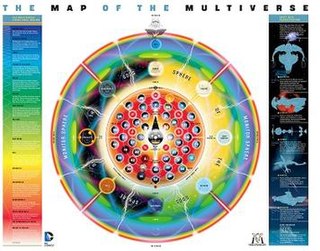
In most of the DC Comics media, the Multiverse is a "cosmic construct" composed of the many fictional universes the stories of DC media take place in. The worlds in the multiverse share a space and fate in common, and its structure has changed several times in the history of DC Comics.
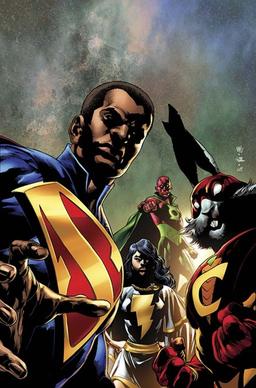
The Multiversity is a two-issue limited series combined with seven interrelated one-shots set in the DC Multiverse in The New 52, a collection of universes seen in publications by DC Comics. The one-shots in the series were written by Grant Morrison, each with a different artist. The Multiversity began in August 2014 and ran until April 2015.















